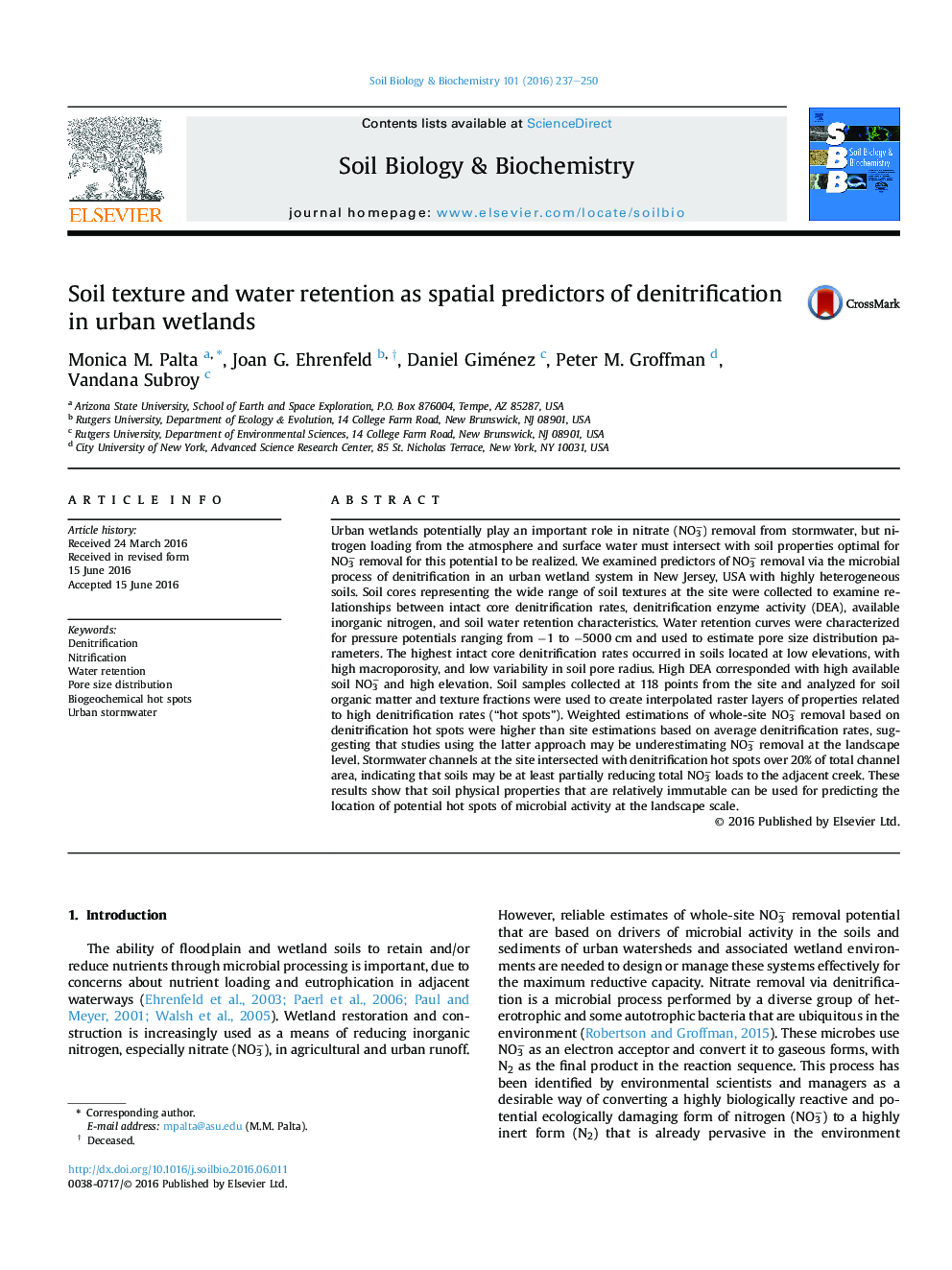| Article ID | Journal | Published Year | Pages | File Type |
|---|---|---|---|---|
| 8363502 | Soil Biology and Biochemistry | 2016 | 14 Pages |
Abstract
Urban wetlands potentially play an important role in nitrate (NO3â) removal from stormwater, but nitrogen loading from the atmosphere and surface water must intersect with soil properties optimal for NO3â removal for this potential to be realized. We examined predictors of NO3â removal via the microbial process of denitrification in an urban wetland system in New Jersey, USA with highly heterogeneous soils. Soil cores representing the wide range of soil textures at the site were collected to examine relationships between intact core denitrification rates, denitrification enzyme activity (DEA), available inorganic nitrogen, and soil water retention characteristics. Water retention curves were characterized for pressure potentials ranging from â1 to â5000Â cm and used to estimate pore size distribution parameters. The highest intact core denitrification rates occurred in soils located at low elevations, with high macroporosity, and low variability in soil pore radius. High DEA corresponded with high available soil NO3â and high elevation. Soil samples collected at 118 points from the site and analyzed for soil organic matter and texture fractions were used to create interpolated raster layers of properties related to high denitrification rates (“hot spots”). Weighted estimations of whole-site NO3â removal based on denitrification hot spots were higher than site estimations based on average denitrification rates, suggesting that studies using the latter approach may be underestimating NO3â removal at the landscape level. Stormwater channels at the site intersected with denitrification hot spots over 20% of total channel area, indicating that soils may be at least partially reducing total NO3â loads to the adjacent creek. These results show that soil physical properties that are relatively immutable can be used for predicting the location of potential hot spots of microbial activity at the landscape scale.
Related Topics
Life Sciences
Agricultural and Biological Sciences
Soil Science
Authors
Monica M. Palta, Joan G. Ehrenfeld, Daniel Giménez, Peter M. Groffman, Vandana Subroy,
